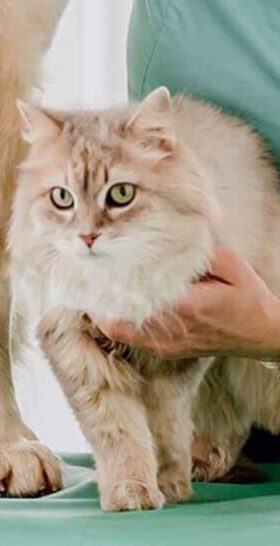
WHAT IS THE MEANING OF CATS SOUNDS

Cats communicate using a range of sounds, each conveying different emotions and intentions. Understanding the meaning of these sounds helps cat owners connect with their pets and respond appropriately to their needs. In simple language, here’s a breakdown of common cat sounds and what they mean.
10 Cat Sounds Your Cat Makes and What They Mean
1. Meowing
- What it sounds like: A simple “meow” or variations of it.
- Meaning: Meows are often directed at humans and not other cats. It’s their way of talking to us. The meaning can vary depending on the tone and situation:
- Short meows usually mean a friendly greeting, like “Hello!” or “Pay attention to me.”
- Longer, drawn-out meows may mean your cat wants something, like food or to go outside.
- Repeated meowing might suggest they are excited or need something urgently.
2. Purring
- What it sounds like: A soft, continuous, rumbling sound.
- Meaning: Purring is typically a sign of contentment and happiness. Cats often purr when they’re relaxed, like while being petted or lying in a comfortable spot. However, cats also purr when they’re anxious, sick, or in pain. In those situations, purring can be a way for cats to comfort themselves.
3. Hissing
- What it sounds like: A sharp, hissing noise similar to the sound of air escaping.
- Meaning: Hissing is a clear sign that a cat is scared, threatened, or angry. When a cat hisses, it’s warning others to back off. This sound often accompanies an arched back, puffed-up fur, and bared teeth.
4. Growling
- What it sounds like: A low, rumbling growl.
- Meaning: Growling is a stronger warning than hissing. It signals that a cat is feeling highly defensive or ready to attack if provoked. It’s important to give a growling cat space to avoid triggering aggression.
5. Chirping or Chattering
- What it sounds like: A series of quick, high-pitched chirps or chatters.
- Meaning: Cats often make this sound when they’re watching birds, squirrels, or other small animals outside the window. It’s thought to express frustration or excitement, as if they’re “talking” to their prey or trying to mimic bird sounds.
6. Yowling
- What it sounds like: A loud, drawn-out meow, often sounding like a wail.
- Meaning: Yowling is usually a sign of distress or discomfort. Cats may yowl when they’re in pain, scared, or disoriented. Older cats may yowl due to cognitive issues, while female cats in heat may yowl as a way of attracting mates.
7. Trilling
- What it sounds like: A short, high-pitched, rolling sound, almost like a purr but more vocal.
- Meaning: Trilling is a friendly sound that cats often use to greet their owners or other cats. It’s a positive noise, indicating happiness or excitement, and sometimes used by mother cats to call their kittens.
8. Caterwauling
- What it sounds like: A shrill, wailing sound, similar to yowling but even more intense.
- Meaning: Caterwauling often occurs when a cat is in heat or if they’re feeling extremely distressed. This sound can be startling and loud, indicating high emotional tension.
9. Silent Meow
- What it looks like: The cat opens its mouth as if to meow but no sound comes out.
- Meaning: Silent meows are a subtle way of getting attention. Some cats use this when they want something without being too vocal, while others might use it when they’re comfortable and relaxed but still want to communicate.
10. Howling
- What it sounds like: A deep, mournful wail.
- Meaning: Howling is often a sign of illness, injury, or extreme emotional distress. If a cat is howling, especially if it’s unusual for them, it’s important to check for signs of pain or take them to the vet.
Body Language and Context
Understanding cat sounds also involves paying attention to their body language. Cats communicate with a combination of sounds and movements. For example:
- Tail flicking can signal irritation or excitement.
- Ears pinned back usually mean fear or aggression.
- A relaxed body and purring indicate contentment.
When interpreting your cat’s sounds, it’s important to consider the context. If your cat is meowing near its food bowl, it’s likely asking for food. If it’s hissing while encountering a strange animal, it’s likely feeling threatened.
Conclusion
Cats have a rich and diverse vocal repertoire. By paying attention to their sounds, as well as their body language, cat owners can better understand their pets’ needs and emotions. Whether your cat is meowing for attention, purring with contentment, or hissing in fear, each sound plays a key role in their communication. Recognizing these sounds will help build a stronger bond between you and your furry friend.





